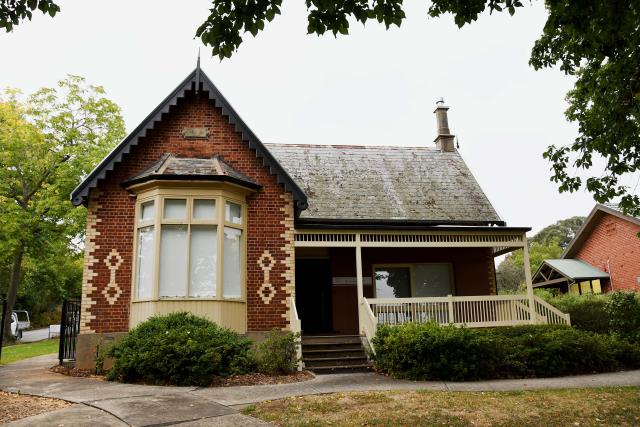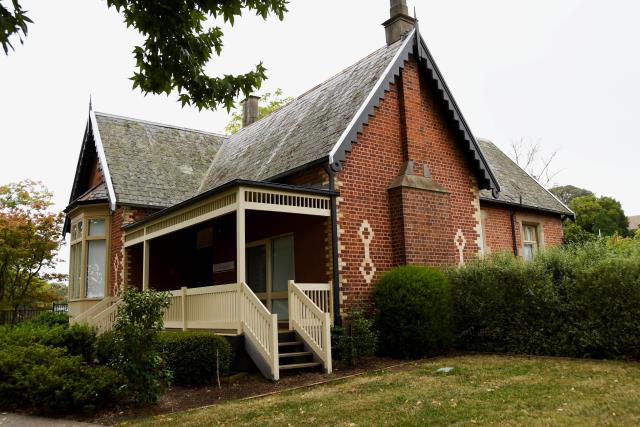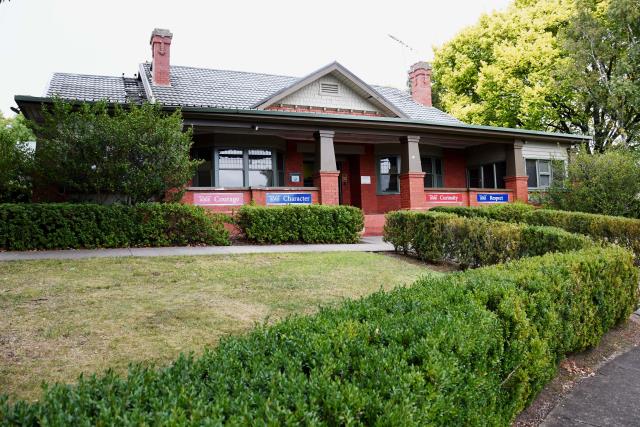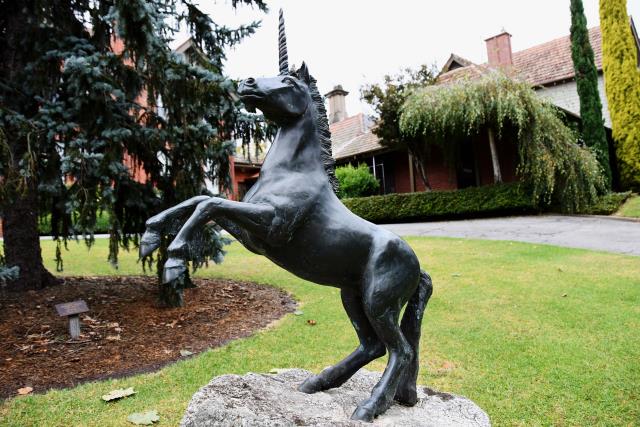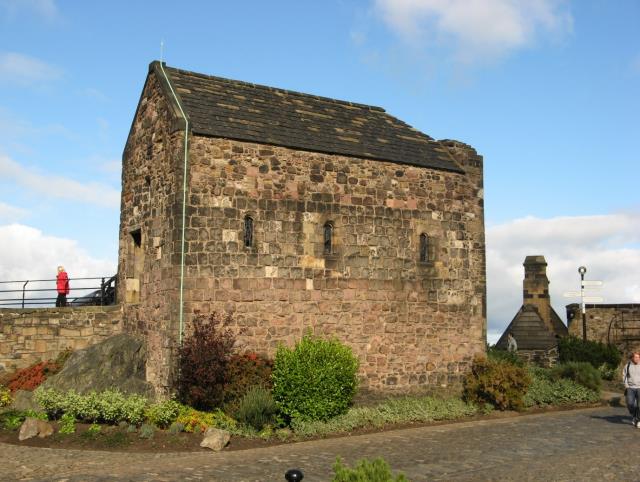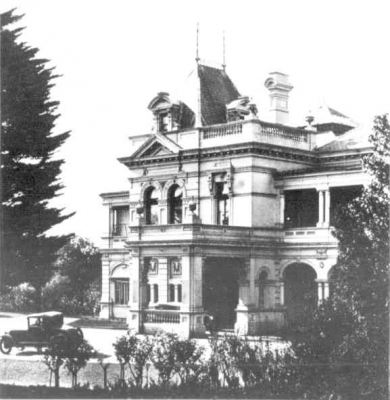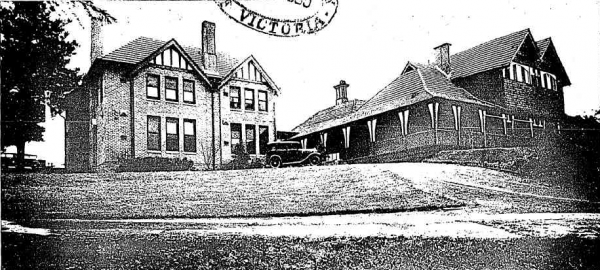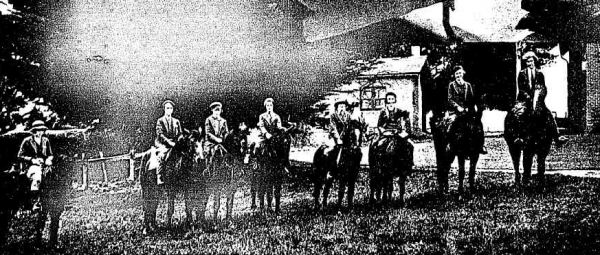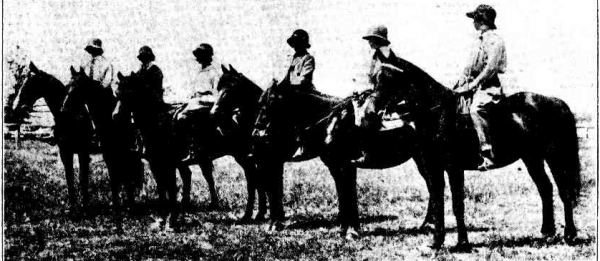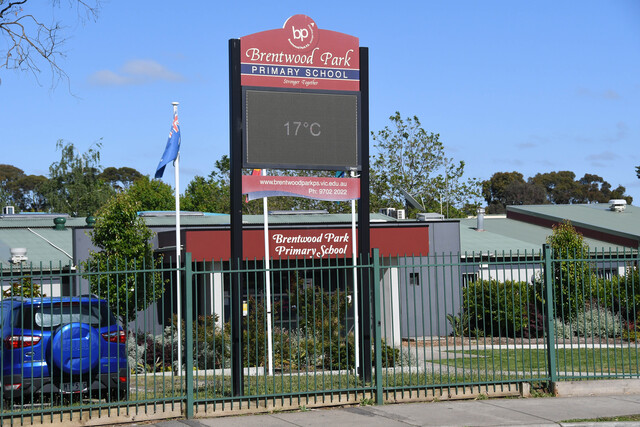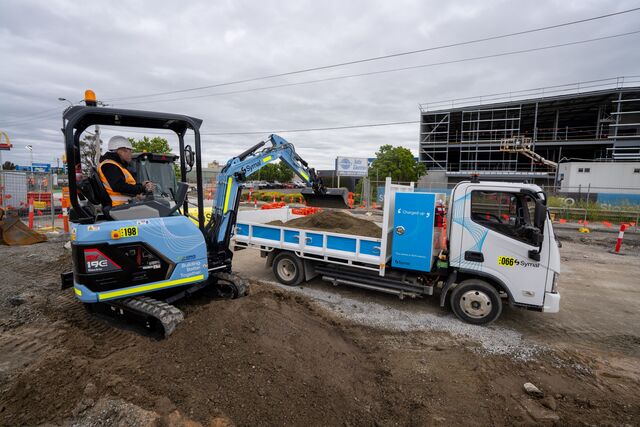St Margaret’s Place in Berwick may be short in length, but the school after which it is named has an interesting history and is an icon in the Berwick district, as NEIL LUCAS reports in his latest look at the significance of street and place names in the region.
St Margaret’s Place, Berwick
St Margaret’s School was founded quite some distance from Berwick, in fact in Toorak a fashionable location in inner Melbourne.
A chance meeting in Edinburgh, Scotland in 1924 between Toorak residents Mr and Mrs John Campbell and a teacher Miss Dora Gipson resulted in the latter being appointed as governess to the Campbell’s two young daughters Margaret and Alison for the remainder of the holiday overseas and for the long journey home by ship.
This arrangement worked so well that Miss Gipson accepted the Campbell’s invitation to continue as governess at their home Kintyre in Heyington Place. News of this appointment amongst acquaintances resulted in a further four girls joining the regular classes making a total of six pupils.
Mrs Campbell then conceived the idea of Miss Gipson establishing a school and put such a proposal to her.
Coincidentally, the Minister at the nearby Toorak Presbyterian Church was planning a nine-month visit to Europe and was contemplating what arrangements should best be made for his young daughter Elspeth.
The Minister’s quandary was resolved satisfactorily. The church board of management agreed during its minister’s absence for the manse and the church hall to be made available to Miss Gipson for the purpose of a school.
The manse could be used as a boarding house where his daughter could be cared for in her own home whilst he and his wife were overseas. Thus, the school began in February 1926 with an enrolment of 18 pupils.
Miss Gipson decided on the name St Margaret’s, named after a Scottish Queen by that name.
Saint Margaret of Scotland (C1045- 1093) was an English Princess who fled to Scotland with her family following the Norman Conquest in 1066. A short time later Margaret married the Scottish King Malcolm III.
Throughout her life Queen Margaret maintained a strong Christian faith and daily served the poor and orphans and had a great influence on the form of worship and practices of the Scottish Church.
To assist pilgrims journeying north Margaret established ferries across the Firth of Forth at two sites, one appropriately named Queensferry and the other at North Berwick. Margaret spent much time in prayer and undertaking religious activities.
More than 150 years after Margaret’s death in 1093, Pope Innocent IV proclaimed Queen Margaret a Saint. St Margaret’s Chapel within the grounds of Edinburgh Castle is named after Saint Margaret – built during the reign of Saint Margaret’s fourth son David I of Scotland.
The return of the Minister from overseas at the end of 1926 required a change of location for the school and Miss Gipson seized upon an opportunity to lease premises of another school, Toorak College, which was contemplating a move to a country location at Frankston. Accordingly, the school moved to its new premises in Mayfield Avenue Malvern, just a little more than one kilometre from its original site at the Presbyterian Church and with an initial enrolment of 82 girls which quickly grew to more than 100.
A badge adopted for the school was based on Miss Gipson’s Irish Cunningham family’s crest which incorporated a unicorn with the motto below in Latin – “Virtute et Labore” (the power of labour) which the students knew as “be good and work hard”.
In early 1929 Miss Gipson was approached by representatives of a school known as Presbyterian Girls School Berwick.
The school was in a difficult situation and it was put to Miss Gipson that St Margaret’s and PGS Berwick should merge with a view to providing a country annex with boarding provision for St Margaret’s.
After negotiations were completed Miss Gipson became the owner of what had been PGS Berwick. The school building used by Miss Gipson was named Kippenross and had been built in 1911 for the Hon. John Pearson MLA.
The name Kippenross came from Pearson’s family home in Scotland. This building had been used by PGS Berwick as a school and accordingly was set up to continue in that role when sold to Miss Gipson.
St Margaret’s now had two campuses, one at Malvern, and the other in Berwick. (At this time, it was quite fashionable for girls’ schools to be located in the country to make the most of a healthy lifestyle in a rural situation).
Miss Gipson quickly arranged for the building of new brick classrooms (ground floor) and boarding accommodation (first floor), the building being named Campbell House after the family which had initiated the establishment of the school.
The small site in Mayfield Avenue and the increasing enrolment was a cause for concern and this was satisfactorily remedied when Miss Gipson obtained a lease of a much larger house and gardens very close to the Mayfield address.
The property was known as Stonnington and had been built in 1890 by John Wagner a partner in Cobb & Co coaches. As a significant building, the State Government had leased the property as the residence for the State Governor from 1901 until 1931 (after Federation the Federal Parliament sat at the Victorian Parliament House and the Governor-General resided in the State Government House in the Domain. The State Parliament met in the Exhibition Building).
After six years at Stonnington, in October 1937 Miss Gipson announced that the school at that location would be abandoned, boarders would be sent to Berwick, and a much smaller school would continue in Mayfield Avenue.
Meanwhile the school at Berwick continued to flourish.
One interesting initiative was the creation of a Mounted Girl Guide Company. Many of the boarders at Berwick kept horses and ponies in the school’s paddocks.
In 1931, at the suggestion of Lady Somers, wife of the State Governor Lord Somers, a Girl Guide Company was established as a mounted company, being one of only two in the world – the other was in Canada.
The Age newspaper reported on the 1934 Speech Night – “The Guide company, mounted and unmounted, had had a happy and successful year, and the mounted guides were present at the Berwick reception to the Duke of Gloucester. There were now eleven girls who rode regularly under the escort of a capable riding mistress, and they had explored much of the surrounding district”.
One of the effects of the Second World War was falling enrolments of boarders at Berwick. At Mayfield Avenue there were also difficulties with enrolments and the general situation caused Miss Gipson to make a decision to close the school. All activity from now on would be at Berwick.
However, two of the teachers at Mayfield took on a lease of the building and established Little St Margaret’s for younger students. This school, albeit with no formal connection to St Margaret’s Berwick continued on for 30 years.
St Margaret’s Berwick continued to operate successfully through the 1940s and by 1947 there were 56 boarders being catered for.
However further bad health suffered by the Principal in 1947 resulted in Miss Gipson advising parents of her intention to retire at the end of that year resulting in the closure of the school.
Taking the example of a similar situation which had occurred at St Catherine’s in Toorak where parents had “bought” the school from the proprietor, parents of St Margaret’s girls undertook to do the same. A Board of Trustees was established, a deposit of 2500 pounds quickly raised, and a contract of sale entered into to purchase the school and its fittings and equipment for the sum of 12,421 pounds.
The St Margaret’s School Association was formed and parents acquired debentures to become part owners of the school – the school was now “owned” by the parents.
The new principal was Miss Elizabeth Woodyatt, under whose 16 years of leadership the school prospered. During Miss Woodyatt’s time the school purchased two adjoining properties known as The Cottage and Gloucester House, both buildings on these properties having been constructed as dwellings.
The oldest, known as The Cottage was located just inside the front gate of the school and had been built in 1878. Now restored, it houses St Margaret’s Heritage display and information.
The other home on the property which became known as Gloucester House was built in 1918 for Mr George Wilson and his wife Maria.
The Wilsons, members of one of Berwick’s pioneering families, had acquired a small house of exactly the same design as The Cottage which was located immediately to the south of that building. They demolished that building in order to construct their new home which they named Numba, such name being taken from the district in New South Wales where Maria had grown up.
In 1949 the School Council established a building fund for the purposes of building a school hall to be used for assemblies, drama and as a gymnasium. Sufficient funds were raised for this purpose and the school hall was formally opened on 15 November 1952 by Rt Hon Richard Casey (Later Lord Casey).
At a later time, adjoining owner of land to the east, Lady Casey gifted land to the school to enlarge the grounds, and later, in the 1980s the school purchased an area from the Edrington Estate which was developed as a sports field.
Over the years there have been many new buildings and developments at St Margaret’s and the school has grown considerably to provide an excellent education for girls who in adult life follow many callings including business and commerce, medicine, law, science and research, teaching, farming, nursing.
The school is known for its academic standards and the caring atmosphere in which it operates and encourages its students to achieve their personal best.
St Margaret’s now provides co-educational schooling from Early Learning to Year 6 at its Berwick Campus, Year 7-12 girls’ education at Berwick Campus, and Year 7-12 boys’ education at its Officer Campus known as Berwick Grammar School.
Footnote – the writer is understandably biased regarding the excellence of St Margaret’s School, having had three daughters attend, the eldest having graduated as Dux of the School.


